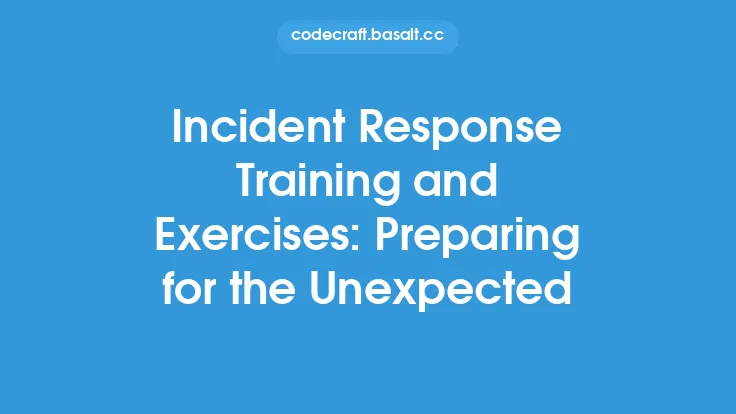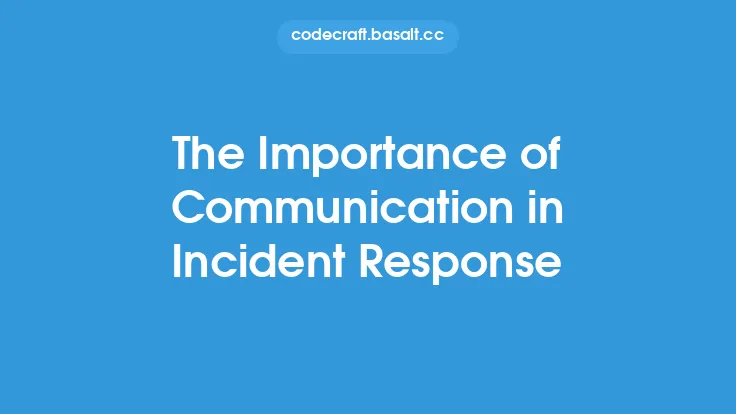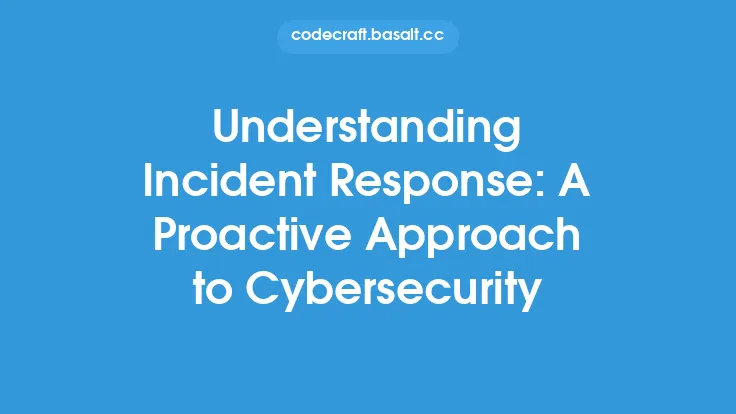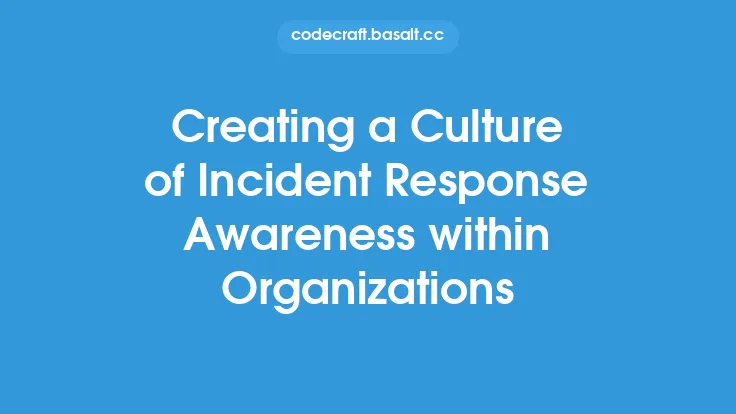In today's digital landscape, organizations face an ever-present threat of cyber attacks, data breaches, and other security incidents that can cause significant damage and downtime. The ability to respond quickly and effectively to these incidents is crucial in minimizing their impact and ensuring business continuity. Incident response and crisis management are critical components of an organization's cybersecurity strategy, and their importance cannot be overstated.
Introduction to Incident Response
Incident response refers to the process of responding to and managing a security incident, which is any event that compromises the confidentiality, integrity, or availability of an organization's assets. This can include cyber attacks, data breaches, malware outbreaks, and other types of security incidents. The goal of incident response is to quickly contain and eradicate the threat, minimize damage and downtime, and restore normal business operations as soon as possible.
Crisis Management
Crisis management is a broader concept that encompasses incident response, as well as other aspects of managing a crisis situation. Crisis management involves a proactive approach to identifying and mitigating potential risks, as well as responding to and managing a crisis situation when it arises. This includes developing a crisis management plan, identifying key stakeholders and communication channels, and establishing a crisis management team.
Key Components of Incident Response and Crisis Management
There are several key components of incident response and crisis management, including:
- Incident detection and reporting: The ability to quickly detect and report security incidents is critical in minimizing their impact. This can be achieved through the use of monitoring tools, such as intrusion detection systems and security information and event management (SIEM) systems.
- Incident containment: Once a security incident has been detected, it is essential to contain it as quickly as possible to prevent further damage. This can be achieved through the use of containment strategies, such as isolating affected systems or blocking malicious traffic.
- Incident eradication: After a security incident has been contained, it is essential to eradicate the root cause of the incident to prevent it from happening again. This can be achieved through the use of eradication strategies, such as removing malware or patching vulnerabilities.
- Incident recovery: After a security incident has been eradicated, it is essential to recover from the incident and restore normal business operations. This can be achieved through the use of recovery strategies, such as restoring data from backups or rebuilding affected systems.
- Incident post-incident activities: After a security incident has been recovered from, it is essential to conduct post-incident activities, such as incident reporting and lessons learned, to identify areas for improvement and prevent similar incidents from happening in the future.
Technical Aspects of Incident Response
From a technical perspective, incident response involves a range of activities, including:
- Network traffic analysis: Analyzing network traffic to identify and contain malicious activity.
- System forensics: Analyzing system logs and other data to identify the root cause of a security incident.
- Malware analysis: Analyzing malware to understand its behavior and identify strategies for containment and eradication.
- Vulnerability management: Identifying and remediating vulnerabilities to prevent security incidents from occurring in the first place.
Best Practices for Incident Response and Crisis Management
There are several best practices for incident response and crisis management, including:
- Developing an incident response plan: Having a plan in place for responding to security incidents is critical in minimizing their impact.
- Conducting regular training and exercises: Regular training and exercises can help ensure that incident response teams are prepared to respond to security incidents.
- Establishing clear communication channels: Clear communication channels are essential in responding to security incidents and managing a crisis situation.
- Continuously monitoring and improving: Continuously monitoring and improving incident response and crisis management processes can help identify areas for improvement and prevent similar incidents from happening in the future.
Common Challenges in Incident Response and Crisis Management
There are several common challenges in incident response and crisis management, including:
- Lack of resources: Incident response and crisis management require significant resources, including personnel, equipment, and budget.
- Complexity: Security incidents can be complex and difficult to manage, requiring specialized skills and expertise.
- Time sensitivity: Security incidents require a rapid response to minimize their impact, which can be challenging in complex and dynamic environments.
- Communication: Clear communication is essential in responding to security incidents and managing a crisis situation, but can be challenging in large and distributed organizations.
Conclusion
In conclusion, incident response and crisis management are critical components of an organization's cybersecurity strategy, and their importance cannot be overstated. By understanding the key components of incident response and crisis management, and by following best practices, organizations can minimize the impact of security incidents and ensure business continuity. Additionally, by being aware of the technical aspects of incident response and the common challenges that organizations face, incident response teams can be better prepared to respond to security incidents and manage a crisis situation.





